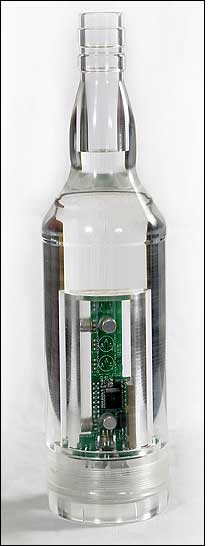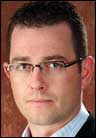Dec 29, 2008With an eye on reducing glass waste and decreasing the amount of fuel consumed to transport glass products, British nonprofit organization Waste & Resources Action Programme (WRAP) has developed a program intended to encourage glass bottle manufacturers, as well as food and beverage companies, to lighten the load.
WRAP's efforts have spurred the U.K. glass industry to produce new, lighter-weight glass bottles for holding everything from wine to coffee. But the manufacturing, bottling and transportation processes were designed for heavier, sturdier receptacles, and are not always appropriate for this new, more sustainable design. With lighter glass, the risk of breakage increases in factories at which bottles are made, as well as in the plants where beverages are bottled, and in the trucks that transport those containers, whether empty or filled.
To identify areas of the bottle factory in which glass is at risk of breakage, as well as to improve line performance and quality control as it manufactures the bottles, Irish glass manufacturer Ardagh Glass is using Agent QC, an RFID-based system provided by Sensor Wireless. By locating the sources of such problems as excessive pressure or collisions between bottles and machinery or other bottles, Ardagh can reduce the cost of losing products, as well as the strain on landfills resulting from broken glass.
The Agent QC system includes smart bottles—facsimiles containing built-in RFID tags with sensors. By placing a smart bottle on the assembly line, the company can identify the exact point in the process at which real glass containers would likely be damaged, according to Wayd McNally, Sensor Wireless' president and CEO.
The system also comes with a handheld RFID interrogator that Ardagh employees can use to capture data from a smart bottle as it passes through the manufacturing line, along with software to interpret that information. In addition, the Agent QC system is being utilized by beverage companies, including Coors, E. & J. Gallo Winery, Coca-Cola and Kirin Beer, to track the pressure applied by factory machinery to the bottles as caps are attached.
Ardagh Glass, one of the largest glass manufacturers worldwide, produces 12 billion glass containers annually, and employs 6,500 people in 20 manufacturing facilities across Europe. With the inclusion of a lighter-weight product, says Paul O'Neill, Ardagh Glass' senior customer service executive for the food, dairy and soft drinks sector, the company has now used the Agent QC system to track the manufacturing process of four new bottles it is providing to major companies. O'Neill declined to name those clients.
ZigBee technology allows the transmission of a greater amount of data, McNally says, but the 900 MHz signal can be more reliable for cases in which there exists 2.4 MHz transmission noise in the facility that could cause interference. As the smart bottle goes through Ardagh Glass' assembly line, staff members place or hold a handheld reader at a particular area of concern, noting the location on the manufacturing line, or in transit to the warehouse, where the impact, pressure or temperature change to the bottles represents a risk for damage.
Sensor Wireless' software enables the handheld device to store data read from the smart bottle. This information can be viewed on the handheld's display screen, then be stored and later downloaded into Ardagh Glass' ERP system via a USB connection to a PC. Ardagh employs other software from Sensor Wireless to analyze the manufacturing line, and to test any modifications made to that line that could potentially improve the manufacturing process.
According to McNally, Ardagh Glass has used Agent QC in several of its plants to design and manufacture new bottles for four clients over the past two years, in order to improve the manufacturing process and limit the amount of damage done to bottles, as well as identify trouble spots.
By the end of 2009, McNally indicates, Sensor Wireless intends to offer a GPS feature to its smart bottle system, allowing the tags within the bottles to transmit their sensor data via a satellite antenna installed on trucks transporting the glass receptacles. With a satellite communications antenna on the truck, the sensor data could be linked with GPS information and transmitted via a satellite communications link in real time. This would allow users to understand where an incident (such as strong jolts and vibrations) occurred as empty bottles are shipped from the glass factory, or as bottled beverages are transported to a retailer.
Additionally, Sensor Wireless is working to develop an automated system that would allow the transmission of data to 900 MHz RFID readers or ZigBee nodes deployed throughout the manufacturing line, without requiring any human intervention. That would necessitate installing low-cost readers or nodes along the assembly line, McNally says—something he is still looking into at present. "Most readers today are still quite large and power-hungry," he states.



